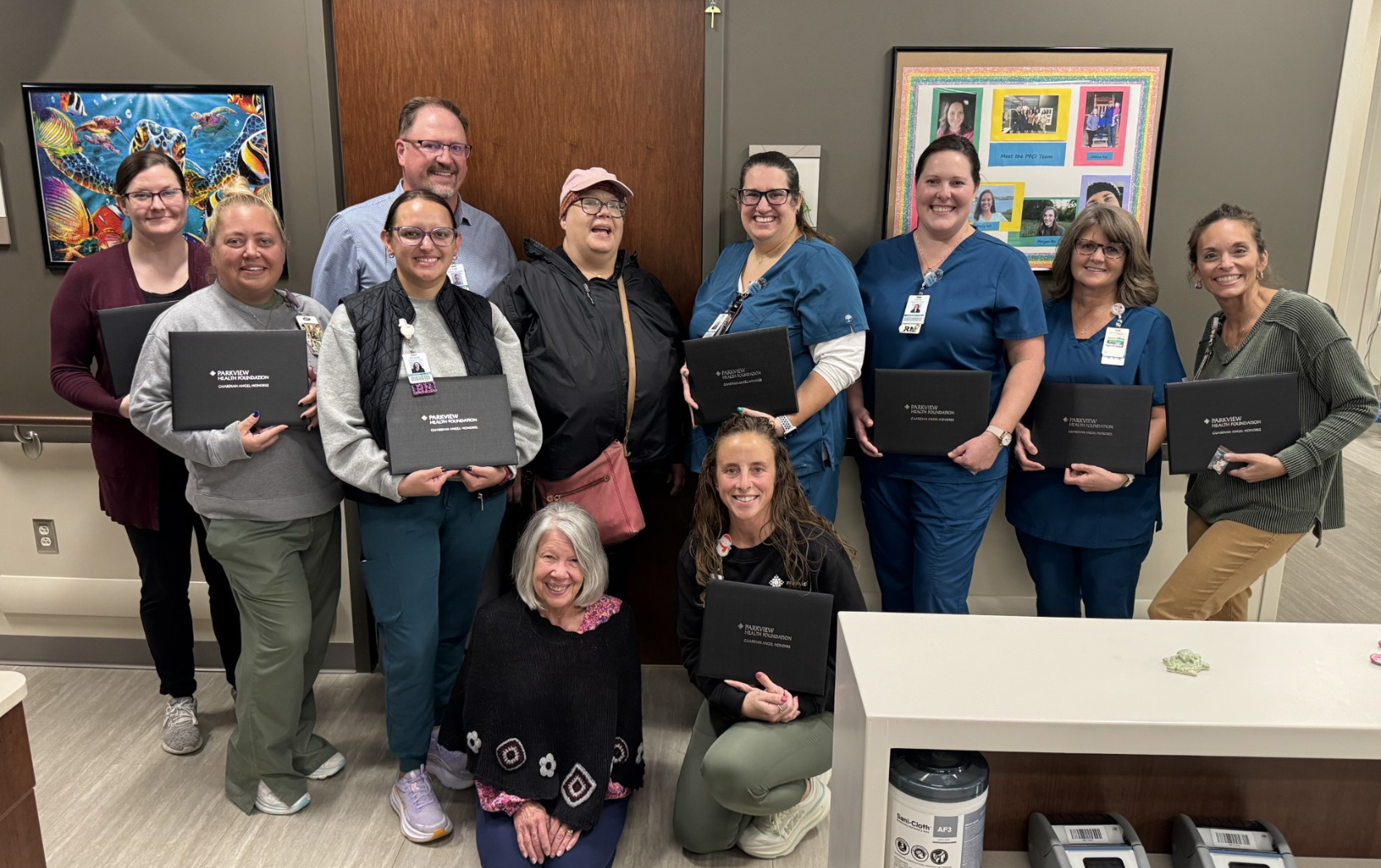
This post was written by Lyndsay Butt, NP, PPG – Pediatric Cardiology.
Postural Orthostatic Tachycardia Syndrome (POTS) is a form of dysautonomia or autonomic dysfunction. The autonomic system helps control the blood pressure and heart rate mechanism and when this is affected many symptoms can arise. Sadly, a lot of pediatric patients get a late diagnosis, as the sensations or effects they’re experiencing are written off or attributed to other factors associated with adolescents. In this post, we’ll take a closer look at what pediatric patients with POTS might experience and how to best manage the condition for optimal quality of life.
POTS symptoms
The symptoms associated with autonomic dysfunction/POTS can be chronic and persistent. Patients and their families often get frustrated because they are told these symptoms are psychological or driven by anxiety. While it is true that stress and anxiety can heighten POTS symptoms, there are measures we can take to help alleviate some of these effects for teenagers and young adults.
As briefly mentioned above, POTS occurs when the intravascular volume is reduced, which in turn causes a decrease in the venous return to the heart, thus causing tachycardia (increased heart rate) and orthostatic intolerance. This tends to be more prominent in females than males. POTS is common between the ages of 9 and 19, with peak occurrence between 12 and 16 years of age when puberty typically occurs causing hormone changes and linear growth.
These changes affect the blood pressure mechanism, and when there is a drop in blood pressure, we see symptoms such as:
- headaches
- blurred vision
- spotty vision
- tunnel vision
- blacking out (syncope)
- near-syncope
- dizziness
- lightheadedness
- numbness
- tingling
- racing and/or pounding heart
- chest discomfort
- shortness of breath
- feeling cold and clammy or hot and sweaty
Factors that can exacerbate POTS symptoms
When there’s a drop in blood pressure, the normal compensatory response of the body is to have an increase in the heart rate. Sometimes with these symptoms, patients can experience an exaggerated tachycardia but there is no fall in the blood pressure. These symptoms usually occur following a change in posture from sitting to standing, but can also occur after meals, following any exertional activity or as a result of prolonged standing.
POTS symptoms tend to be worse during:
- early morning hours
- in hot weather
- during menses
- if there is a fever or illness
Most POTS patients are unable to tolerate standing while taking a warm shower and must sit down to bathe. The simple act of showering can exhaust these patients and they may need to lie down and rest after.
These symptoms can also be exacerbated by emotional, psychological and physical stress.
Managing POTS
It’s worth noting that, while these symptoms can be debilitating for patients, they can also be managed, often without medication, and the adolescent can lead a normal life.
The first line of treatment is aggressive fluid and salt intake. Excess fluid and sodium help maintain adequate blood pressure, which can help minimize the symptoms associated with POTS. Patients need to consume a minimum of 64 ounces of non-caffeinated fluid daily, but preferably closer to 80 ounces. To keep that extra fluid on board, rather than just passing it through urination, they also need to increase their sodium intake.
It’s recommended to get at least 2 grams of sodium daily with a maximum of 4 grams. We always recommend patients try increasing salt through their diet first. This can be accomplished by eating processed foods that are high in sodium, like deli meats/cheeses, beef jerky, pepperoni, ramen noodles, macaroni and cheese or chicken noodle soup. Although, it’s a bit more challenging for adolescents to measure their sodium intake when it is just added to the diet, most prefer this approach.
Salt tablets can be purchased over the counter or by prescription and come in 1-gram doses. This excess salt can upset the stomach, so we always advise the patient to take them with meals or try to dissolve them in lemon-lime soda. We also advise that patients take these first thing in the morning with breakfast to try to get ahead of symptoms and that they are consistent. We don’t just want them taking salt tablets when symptoms hit.
There are a variety of salt supplements available now like Liquid I.V.® (each packet has 500mg of sodium), LMNT (1000mg of sodium) and Salt capsules (250mg of sodium), which tend to be easier on the stomach than the salt tablets. It should be noted that salt tablets are significantly cheaper than these salt substitutes.
Eating smaller, more frequent meals can also help prevent big fluctuations in blood pressure and heart rate. We see that, when these patients get too hungry, and then try to eat a big meal, they are more prone to venous pooling in the gut which can lead to heightened symptoms.
The care team at Pediatric Cardiology does provide POTS patients with a note for the school that allows the student to have unlimited bathroom breaks, salty snacks and to be allowed a 10–15-minute break if symptoms become overwhelming. Some patients even implement a 504 plan or chronic illness form for the school that specifically outlines the plan of action for that individual.
We also emphasize the importance of remaining active as much as tolerated. Walking, swimming, the recumbent bike and yoga are all excellent options for exercise for these individuals. While it may seem daunting to be active, it will help with the vasoconstriction of the blood vessels and can help the individual feel better. We can even order physical therapy if they are too weak to consider physical exertion.
When patients stand for long periods, we recommend compression socks or leggings to help prevent venous pooling in the legs. Venous pooling can lower the venous return to the heart thus causing a decrease in blood pressure.
We educate our patients that it is pertinent to maintain adequate fluid and salt intake consistently and if this is not helping manage the symptoms, we then discuss medication options. In the pediatric world, we try to avoid medication, if possible, but this is not always possible. When we do need to treat the patient with a medication like Midodrine or Florinef, we try to wean them off after one year.
Clinical pearls about POTS
- Aggressive hydration and salt intake can help in minimizing/controlling symptoms.
- Physical activity is often overlooked and seems impossible, but it is an important part of overcoming symptoms of POTS.
- Compression socks or leggings help prevent venous pooling.
- Our goal is to help patients who are experiencing these symptoms to lead an active lifestyle and rise above the effects of POTS.
- With treatment, the symptoms can improve and even resolve.
If you suspect your child has POTS, dysautonomia or autonomic dysfunction, speak with your pediatrician or primary care provider to see if they think a referral to PPG – Pediatric Cardiology could be beneficial. For more information about our pediatric specialties, call 260-266-5400.



